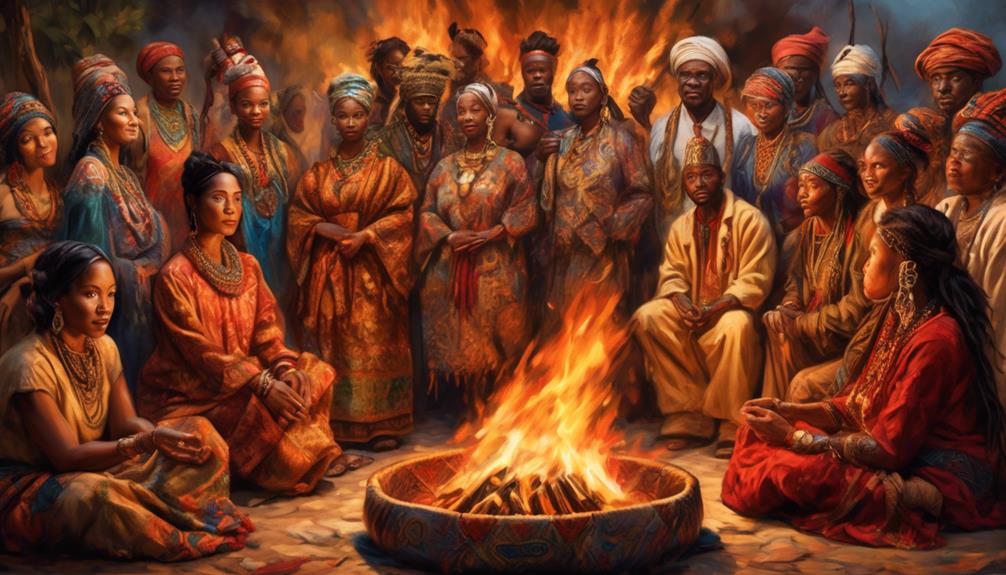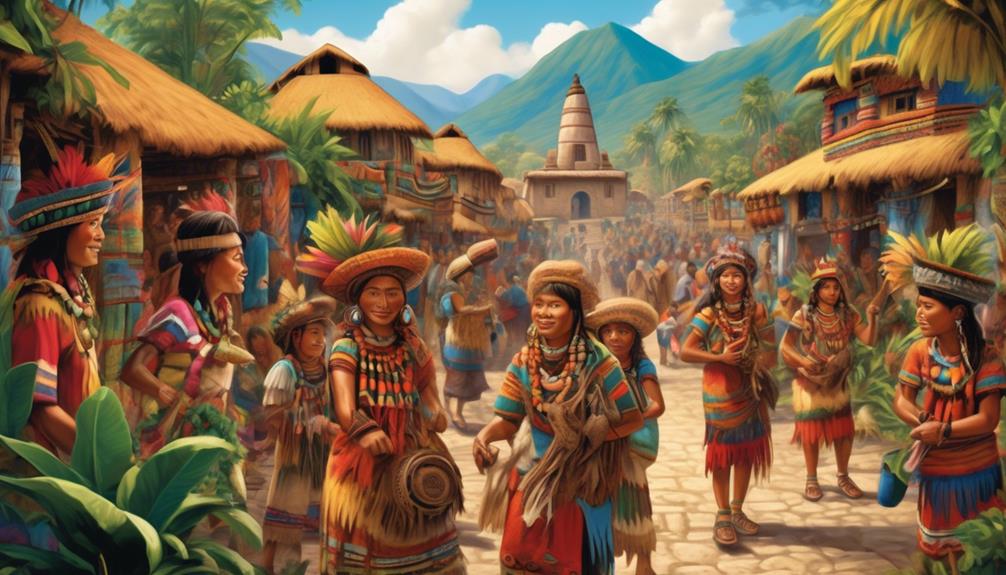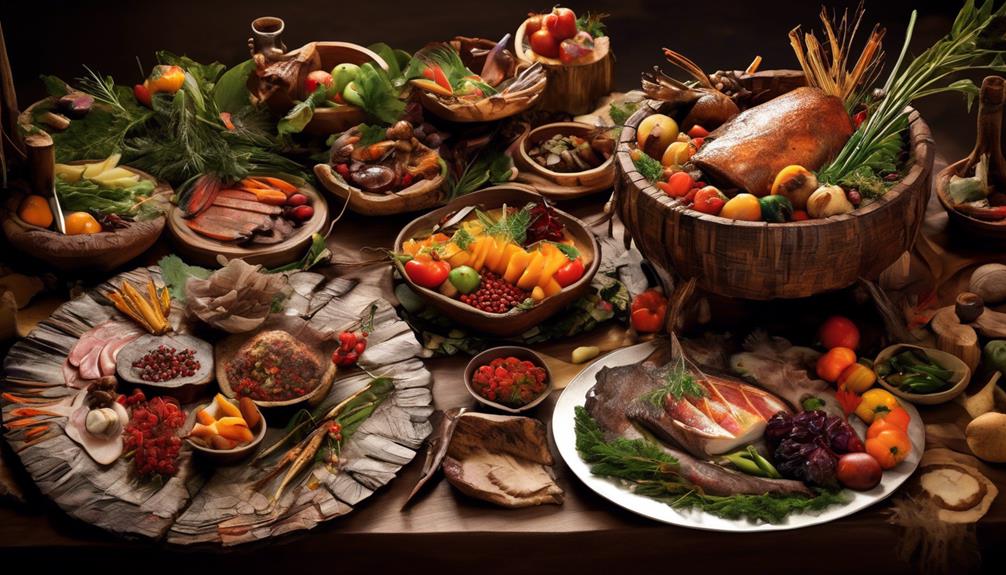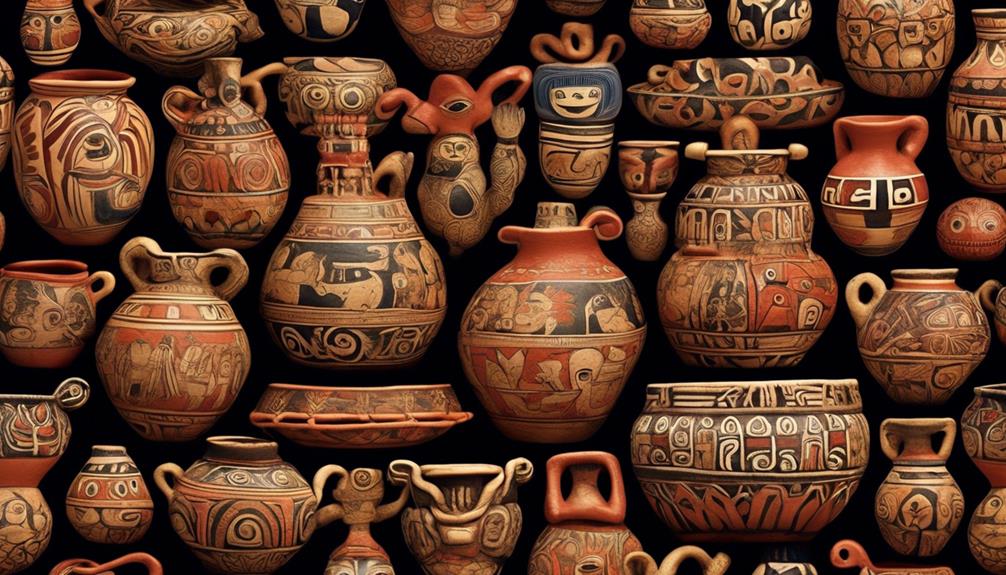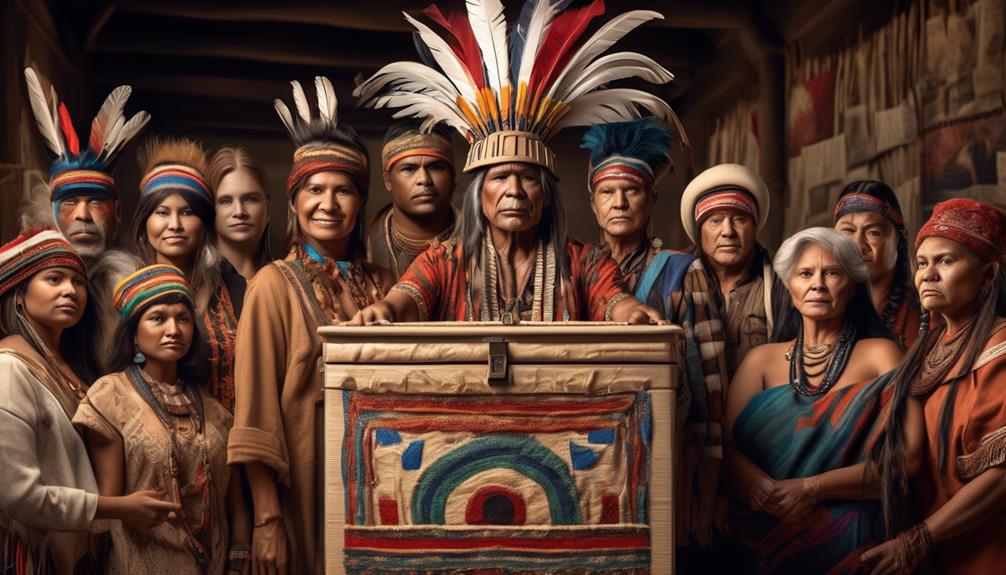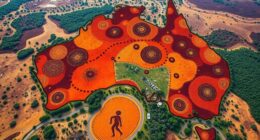If asked, many people may recognize the term ‘indigenous,’ however, did you know that there are over 370 million indigenous individuals worldwide, belonging to 5,000 unique groups and living in 90 different countries?
When it comes to defining the term 'indigenous,' the waters can get a bit murky. It's a term that holds immense cultural, historical, and legal significance, and as we delve into the nuances of its definition, we'll explore the intersection of identity, community, and rights.
So, which definition truly encapsulates the essence of what it means to be indigenous? Let's navigate through the complexities and uncover the answer together.
Key Takeaways
- Indigenous people have historically been depicted as primitive or uncivilized due to colonial encounters and ethnocentric biases.
- Legal recognition of indigenous status is crucial for the preservation of traditional practices, languages, and knowledge systems.
- Indigenous cultural heritage includes tangible artifacts, traditions, language, knowledge systems, and spiritual beliefs, which are linked to the identity and well-being of indigenous peoples.
- Indigenous communities have a collective responsibility in preserving and transmitting ancestral traditions, as well as fostering a sense of belonging.
Historical Perspectives on Indigenous Identity
In examining historical perspectives on indigenous identity, it's crucial to consider the complex and evolving nature of how indigenous peoples have been defined and understood throughout history. Historical perspectives often depict indigenous peoples as primitive or uncivilized, a view shaped by colonial encounters and ethnocentric biases. Such perspectives failed to recognize the rich cultural practices and sophisticated social structures of indigenous communities. The lens through which indigenous identity was perceived has gradually shifted, acknowledging the deep connection to land, the preservation of traditional knowledge, and the resilience in the face of adversity.
Cultural practices, such as ceremonies, language, and communal living, have been integral to the historical perspectives on indigenous identity. These practices not only sustained indigenous communities but also served as a means of resistance against cultural assimilation and forced acculturation.
The historical narrative of indigenous identity is a tapestry woven with threads of systematic oppression, cultural erasure, and the enduring spirit of indigenous peoples. Understanding historical perspectives on indigenous identity necessitates recognizing the profound impact of colonialism and the ongoing resilience of indigenous cultures.
Legal Definitions of Indigenous Status

Legal definitions of indigenous status often vary between different countries and legal systems. It's essential to understand the diverse ways in which indigenous peoples are legally recognized and the implications of this recognition for their cultural preservation.
- Recognition of Indigenous Status:
Some countries have specific legal criteria for recognizing indigenous groups, such as historical ties to a particular territory or distinct cultural practices. This recognition may afford indigenous communities certain rights and protections under the law, including land rights and self-governance.
- Cultural Preservation:
Legal recognition of indigenous status is crucial for the preservation of traditional practices, languages, and knowledge systems. It can enable indigenous communities to maintain and revitalize their cultural heritage, ensuring that it's protected and respected within the broader legal framework.
Understanding the legal definitions of indigenous status is fundamental to addressing the unique challenges faced by indigenous peoples and promoting their rights to cultural preservation. It also highlights the importance of international legal frameworks, such as the United Nations Declaration on the Rights of Indigenous Peoples, in safeguarding the rights and well-being of indigenous communities worldwide.
Indigenous Peoples and Cultural Heritage
After understanding the legal definitions of indigenous status and its implications for cultural preservation, we now explore the intersection of Indigenous Peoples and their cultural heritage.
Cultural preservation is intricately linked to the identity and well-being of Indigenous Peoples. It encompasses not only tangible artifacts and traditions but also the intangible aspects of their heritage, such as language, knowledge systems, and spiritual beliefs.
The cultural heritage of Indigenous Peoples is often deeply rooted in their ancestral lands, making land rights a fundamental aspect of preserving their way of life.
Indigenous Peoples have a profound connection to their traditional territories, which are integral to their cultural identity and practices. The preservation of their cultural heritage is closely intertwined with securing land rights, as it enables them to continue their traditional practices, maintain sacred sites, and safeguard their knowledge systems for future generations.
Moreover, the recognition and protection of Indigenous land rights are essential for ensuring that their cultural heritage isn't only preserved but also respected and upheld within the broader societal framework.
This intersection highlights the inseparable link between Indigenous Peoples, their cultural heritage, and their ancestral lands.
Self-Identification and Indigenous Communities

Exploring the complex dynamics of self-identification within Indigenous communities reveals the multifaceted nature of cultural identity and the intrinsic connection to ancestral traditions and practices. Within Indigenous communities, self-identification goes beyond individual recognition and extends to the collective acknowledgment of shared experiences and heritage. This process is deeply intertwined with the community's recognition of its members and their cultural preservation efforts.
- Interconnectedness: The self-identification process is deeply rooted in the interconnectedness of Indigenous communities, where individuals see themselves as integral parts of a larger whole. This interconnectedness extends to the collective recognition of each member's role in preserving and transmitting cultural traditions.
- Inter-generational Transmission: Self-identification within Indigenous communities involves the inter-generational transmission of knowledge, values, and practices. This transmission plays a crucial role in preserving cultural heritage and fostering a sense of belonging.
Recognizing the complex nature of self-identification within Indigenous communities is essential in understanding the profound significance of cultural preservation and community recognition. It underscores the interconnectedness of individuals and their collective responsibility in preserving and transmitting ancestral traditions.
Contemporary Debates on Indigenous Rights
Contemporary debates surrounding Indigenous rights have brought to light the complexities of navigating traditional practices within modern legal frameworks. Two key points of contention are sovereignty struggles and land rights. Sovereignty struggles refer to the ongoing battles for self-governance and autonomy over traditional territories. Indigenous communities often seek recognition of their inherent right to govern themselves and manage their own affairs. On the other hand, land rights are central to Indigenous struggles, encompassing issues such as land ownership, usage, and protection.
| Contemporary Debates on Indigenous Rights | ||
|---|---|---|
| Challenges | Implications | Potential Solutions |
| Sovereignty Struggles | Heightened tensions between Indigenous communities and state governments | Recognition of Indigenous sovereignty through legal mechanisms and treaties |
| Land Rights | Displacement and loss of cultural heritage | Collaborative land management agreements and legal protections for Indigenous territories |
These debates underscore the need for nuanced approaches to Indigenous rights within legal and policy frameworks, acknowledging historical injustices while addressing contemporary realities.
Frequently Asked Questions
What Are the Current Challenges Facing Indigenous Communities in Terms of Preserving Their Cultural Heritage?
Preserving traditions and cultural preservation are vital for indigenous communities. They face significant challenges such as economic pressures, environmental degradation, and political marginalization. These threats directly impact the continuity of their heritage. Additionally, globalization and modernization pose risks to traditional practices and knowledge.
In response to these challenges, indigenous communities are actively working to find sustainable solutions and advocate for their rights. They understand the importance of preserving their cultural heritage and are taking steps to address the complexities of these challenges.
To ensure the preservation of indigenous cultural heritage, collaborative and culturally sensitive approaches are necessary. It is crucial to work hand in hand with these communities, respecting their values, traditions, and knowledge. This approach will help to safeguard their heritage for future generations and promote cultural diversity and understanding.
How Do Indigenous Communities Self-Identify and Maintain Their Cultural Traditions in Contemporary Society?
We, indigenous communities, navigate self-identification and cultural preservation amidst modern societies. Our self-identification is rooted in our ancestral ties and shared traditions, vital for preserving our cultural heritage.
Despite challenges, we assert indigenous rights and strive to maintain our distinctiveness in contemporary society. Our resilience and determination are evident as we continue to uphold our cultural traditions, fostering a sense of belonging and identity within our communities.
What Are the Potential Impacts of Legal Definitions of Indigenous Status on Indigenous Communities?
The legal implications of indigenous status definitions can greatly impact indigenous communities. These definitions determine access to resources, rights, and representation. They shape the recognition and protection of indigenous cultures and traditions.
The community impact is substantial, influencing identity, land rights, and political participation. Legal definitions can either empower or marginalize indigenous communities, affecting their ability to preserve their heritage and maintain autonomy.
How Do Historical Perspectives on Indigenous Identity Inform Contemporary Debates on Indigenous Rights?
Historical perspectives on Indigenous identity deeply influence ongoing debates on Indigenous rights. These perspectives shape discussions on cultural preservation, legal definitions, and status in modern societies.
Understanding the complex evolution of Indigenous identity informs contemporary discourse, shedding light on the complexities of Indigenous rights.
What Are the Key Factors Contributing to the Ongoing Debates Surrounding Indigenous Rights in Modern Societies?
Ongoing debates surrounding indigenous rights in modern societies are fueled by the struggle for societal inclusion and preserving heritage and cultural identity.
The key factors contributing to these debates include historical injustices, land rights, and resource management.
The tension between traditional practices and modern laws also plays a crucial role.
Achieving a balance where indigenous communities can thrive while integrating into contemporary society remains a complex challenge.
Conclusion
In conclusion, the term 'indigenous' refers to the original inhabitants of a particular region or land. It's a complex and multifaceted concept that encompasses historical, legal, and cultural dimensions.
One interesting statistic is that there are an estimated 370 million indigenous people in the world, belonging to over 5,000 different groups, each with their own unique languages, traditions, and identities.
Understanding and respecting indigenous rights and heritage is crucial in today's global society.
Mary is a passionate writer who brings creativity and a fresh perspective to our team. Her words have the power to captivate and inspire, making her an essential contributor to our content. Mary’s commitment to storytelling and dedication to promoting Indigenous culture ensures that her work touches the hearts of our readers. We’re fortunate to have her as part of our team.
